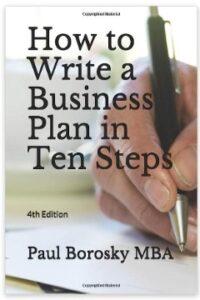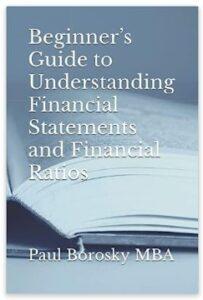How to Write a Convenience Store Business Plan and Template
In today's communities, few businesses cater to a broader audience than convenience stores. With an ever-increasing demand for convenience, these stores have witnessed remarkable growth.
As a result, more entrepreneurs are venturing into the convenience store market, while existing stores frequently dominate business listings and command higher prices due to their strong revenue streams. Thus, crafting a well-structured and comprehensive convenience store business plan becomes vital for startups and those looking to sell their existing operations.
In light of this, our convenience store business plan writer aims to provide valuable insights, tips, and tricks for creating a winning business plan. Whether you are starting a new convenience store or seeking to enhance the profitability of an existing one, a thoughtfully crafted business plan will serve as your roadmap to success. It will help you outline your objectives, strategies, financial projections, and other critical aspects vital for attracting investors and ensuring the store's sustainable growth.
With our convenience store business plan template and expert advice, you can confidently navigate the complexities of the market and position your convenience store for success in this highly demanding and competitive industry. So, let's delve into the essential components of a comprehensive convenience store business plan and pave the way for a thriving and prosperous venture (7/23).
CLICK HERE FOR OUR CONVENIENCE STORE BUSINESS PLAN TEMPLATE!!
Executive Summary for a Convenience Store Business Plan.
The Executive Summary of a Convenience Store Business Plan is a concise overview of the entire document, providing a snapshot of the essential elements. It should capture the key findings and highlights from the comprehensive business plan. Begin by outlining the purpose of the convenience store, its unique selling points, and the target market it aims to serve.
To enhance the summary's effectiveness, include relevant demographics and area information, mainly if the store's location is on a strategic cross street. Mention nearby large employers, apartment complexes, or subdivisions to showcase the potential customer base and foot traffic. Address the convenience store's accessibility by briefly discussing entry and exit points. Emphasize the convenience of the location and how it contributes to attracting customers. Remember that brevity is critical; the Executive Summary should be concise and to the point. Avoid extensive discussions in this section, as more in-depth details will be covered in other business plan segments, such as the location segment.
The Executive Summary should be an engaging and compelling introduction to the convenience store business plan. It should grab the reader's attention, giving them a clear understanding of the store's vision, target market, and competitive advantages. By offering a well-crafted Executive Summary, entrepreneurs can captivate potential investors and stakeholders, encouraging them to explore the full potential of the convenience store venture.
How to Write a Convenience Store Company Information and Location.
When writing the Convenience Store Company Information and Location section, it is crucial to provide a comprehensive overview of the store's address, description, and unique selling points. Differentiating factors, such as discounted prices, easy entry, exit, or low overhead, should be emphasized to highlight the store's competitive advantages.
For the internal aspects of the location, focus on critical details like square footage, available freezer/cooler space, and any potential renovations or improvements planned for the near future. This will give readers an insight into the store's infrastructure and potential for expansion. In the external review, describe the parking lot and the number of parking spaces available to customers. Expand further by providing a detailed description of the surrounding area, including nearby apartment complexes, subdivisions, and large employers. Understanding the demographics and foot traffic in the area is vital for demonstrating the convenience store's market potential and target audience.
By incorporating both internal and external variables into the Convenience Store Company Information and Location section, business owners can provide readers with a comprehensive understanding of the store's physical attributes, market positioning, and growth potential. This detailed review of the convenience store's location and features will play a crucial role in attracting potential investors and stakeholders, instilling confidence in the viability and success of the venture.
Service Description and Competitive Advantages
When crafting the Service Description and Competitive Advantages section for a convenience store business plan, focusing on the range of products offered to customers is essential. Begin by concisely describing the available grocery items, such as bread, milk, snacks, and other essential goods in convenience stores.
Additionally, highlight the convenience store's selection of alcoholic beverages, including beer and wine. Mention any unique offerings or promotions related to these products to attract customers. Furthermore, it emphasizes the store's role as a retail retailer of cigarettes and lotto tickets, acknowledging their potential as revenue generators. Although the profit margins on these items may not be substantial, they often serve as catalysts for additional purchases of higher-margin goods, contributing to overall profitability.
To strengthen the service description, outline any additional services or conveniences the store provides, such as ATM access, prepaid phone cards, or bill payment services. These can further differentiate the convenience store from competitors and add value to the customer experience. Regarding competitive advantages, identify critical factors that set the convenience store apart from others in the market. This could include extended operating hours, a prime and accessible location, customer loyalty programs, or exceptional customer service.
By effectively conveying the service description and competitive advantages, the convenience store business plan demonstrates the store's value proposition and ability to meet customers' diverse needs, ultimately positioning the store for success in a highly competitive industry.
Need Help Writing a Convenience Store Business Plan?
Call or Text Paul, Doctoral Candidate, MBA.
321-948-9588
Email: Paulb@QualityBusinessPlan.com
Hours of Operation: Monday through Friday, 8 am to 9 pm EST.
CLICK HERE TO CONTACT US TODAY!!
Target Market for a Convenience Store Business Plan or Template
When developing the Target Market section for a Convenience Store Business Plan or Template, it is crucial to identify and understand the specific customer segments the store aims to serve. The target market for a convenience store can vary significantly based on its location and surrounding demographics.

For some convenience stores, the primary target market may be residents in the immediate area. This is often the case when the store is near apartment complexes, subdivisions, or significant crossroads. In such instances, the store caters to nearby residents' convenience needs, offering essential goods and services that meet their daily requirements. On the other hand, other convenience stores may target a specific niche of customers, such as large employers in the area. For example, a store near a military base, corporate headquarters, or medical facility may tailor its offerings to cater to the needs of employees and personnel in those establishments. Conducting thorough market research to identify the target market's preferences, habits, and purchasing behaviors is essential. This information will help the convenience store develop a tailored product mix and marketing strategy to attract and retain its desired customer base.
By clearly defining the target market in the business plan, the convenience store can demonstrate a deep understanding of its potential customer base and position itself to effectively meet its needs, increasing the chances of long-term success and profitability.
Industry Research for a Convenience Store Business Plan or Template
When conducting Industry Research for a Convenience Store Business Plan or Template, it is essential to begin by reviewing national statistics and trends relevant to the convenience store industry. Start by examining the overall revenue generated by the industry, such as the $33 billion in revenue in the US over the past year. This figure provides a broad understanding of the market's scale and potential.
Next, delve into the industry's profitability metrics, like the $600 million in profits, resulting in a profit margin of 1.9%. While this margin may seem low, it is crucial to recognize that convenience stores rely on high-volume transactions due to their large customer base, leading to significant overall profits. Analyze the number of convenience stores operating nationwide, which is approximately 39,000. This figure indicates the level of competition and the density of convenience store establishments across the country. Additionally, identify the employment statistics, with approximately 141,000 employees working in these stores. Based on this data, the average store employs approximately four individuals, which provides valuable insights for future financial projections and workforce planning.
By conducting thorough industry research, the Convenience Store Business Plan can present a well-informed analysis of the market's potential and challenges, enabling the store to position itself strategically within the competitive landscape. Understanding industry trends and benchmarks is crucial for making informed decisions and creating a business plan that sets the convenience store on the path to success and sustainability.
Owner and Management Section.

In the Owner and Management Section of a convenience store business plan, the focus should be on the educational and personal experiences of the key individuals involved rather than solely their passion for the industry. While few people may dream of becoming convenience store owners due to the excitement of selling everyday products, the undeniable necessity and profitability of such ventures make this section crucial for showcasing the management team's expertise.
Highlight the owner's and key managers' relevant experiences in management and operations, specifically within the convenience store industry. Emphasize any experience running or managing similar businesses and any specific achievements or successes in this capacity. A solid business background is often essential for a convenience store's successful launch and sustainability. Document any relevant business courses or degrees earned, especially those aligned with the retail industry. In the management section, provide a clear overview of the job responsibilities for each position within the convenience store, such as cashiers, stockers, managers, and assistant managers. This demonstrates a well-structured and organized approach to running the store, ensuring smooth operations and efficient management.
This section establishes credibility and confidence in potential investors and stakeholders by conveying the owner and management team's experiences and understanding of the convenience store industry. It showcases the team's ability to operate the store effectively and positions the convenience store business plan for success in a competitive market.
Funding Request for a Convenience Store Business Plan
When writing the Funding Request for a Convenience Store Business Plan, it is essential to be clear and detailed about the financial requirements to establish and operate the store successfully. Begin by stating the specific dollar amount needed to start the convenience store. This should be a well-calculated figure that covers all initial expenses, such as buildout, land purchases, renovations, and inventory.
Next, outline the equity financing that will be provided by the owner(s) or partners. This demonstrates their commitment to the venture and can instill confidence in potential investors or lenders. Discuss the additional funding sources, whether through loans, grants, or investors. Provide information on how these funds will be secured and how they align with the store's financial objectives.
Break down the funding into specific categories, such as liquor licenses, advertising, employee wages, and other operational expenses. This helps potential investors understand how their funds will be utilized to ensure a successful and sustainable business. At the end of the Funding Request section, clearly state the total funds needed for the convenience store. This final figure is crucial for investors to assess the overall financial requirements and the store's potential for profitability.
The convenience store business plan establishes a solid financial foundation by presenting a well-structured and transparent Funding Request. It showcases the seriousness and viability of the venture, increasing the chances of securing the necessary funds for a successful launch and operation.
Financials and Financial Projections for a Convenience Store Business Plan.

When writing the Financials and Financial Projections for a Convenience Store Business Plan, it is essential to identify the average sales expected from each customer visit. This figure will serve as the basis for revenue projections. For instance, if the convenience store owner expects an average spend of $9 per customer, this will form the foundation for sales calculations.
Next, estimate the number of visitors or shoppers the convenience store will likely attract. This can vary based on location, population density, and other factors. Business owners can calculate the daily revenues by combining the average spend per visit and the daily visitor count. Understanding these financial projections will inform the pricing strategy. Higher visitor counts may allow low-price opportunities to attract more customers, while lower visitor counts may require higher profit margins and product differentiation to maintain profitability.
Once the daily revenues are determined, financial models can be created to project sales for the next 30 days, 12 months, and even five years. These projections will provide valuable insights into the store's potential growth and profitability. Ensure the financial projections align with other business models and strategies in the convenience store business plan. Maintaining consistency between financial expectations and operational plans ensures a realistic and feasible path to success.
By presenting well-structured and data-driven financial projections, the convenience store business plan can clearly understand revenue generation and profitability, thus enhancing the plan's overall credibility and attracting potential investors and stakeholders.
Hopefully, these insightful tips and tricks for writing a business plan were helpful. Email or call us for help with a business plan or financial projections.
Author: Paul Borosky, Doctoral Candidate, MBA., Author
Owner of: Quality Business Plan and Quality Business Consultant.
Date: 7/23/23